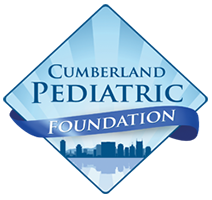Clinical Efforts Against Secondhand Smoke Exposure (CEASE) is a program that encourages pediatricians in Davidson County to screen all children under the age of 5 for exposure to secondhand smoke. If the parent is a smoker, they are given a handout designed to mimic a prescription identifying the 5 key steps for tobacco cessation.
The healthcare provider can make referrals to the Quitline on behalf of the parents who want to quit. Incentives are available for practices that successfully complete the program. The program started in 2016 and will continue into December 2017. Forty-two providers successfully completed the program in December 2016 by serving 17,646 children under the age of five.
_____________________________________________________________________________________________________________________________________________________________
IQH Quitline Success Story, referred by CEASE participant Goodlettsville Pediatrics
A pediatric patient’s primary care giver who smoked approximately ten cigarettes per day for ten years has finally had success quitting after five previous quit attempts. In the past, the care giver reported relapse due to stress and being around other tobacco users. Other identified barriers to quitting included the stress of having small children, limited resources, limited support from family, and reported health conditions such as depression and anxiety.
Why was this time different? The child’s pediatrician utilized CEASE resources to refer the care giver to the IQH Quitline. The IQH Quitline was able to provide resource guidance and education that the care giver previously did not have access to.
Examples of the education and guidance given: insight on possible triggers for smoking, identified coping strategies, educated caller on physiological aspects of quitting- including how caffeine impacts quitting, provided starter kit of 14mg patches.
Action Steps: The care giver planned a quit date, tracked progress through IQH Quitline surveys, eliminated smoking in the household and in automobile prior to quit date, implemented coping strategies for stress, and anxiety, implement use of NRT (provided by Quitline).
“The program was simple and surprisingly effective. Our patient’s care givers truly want to do right by their children, and they perceive pediatricians as a trusted voice.”
-Dr. Mary Dundon, Goodlettsville Pediatrics
